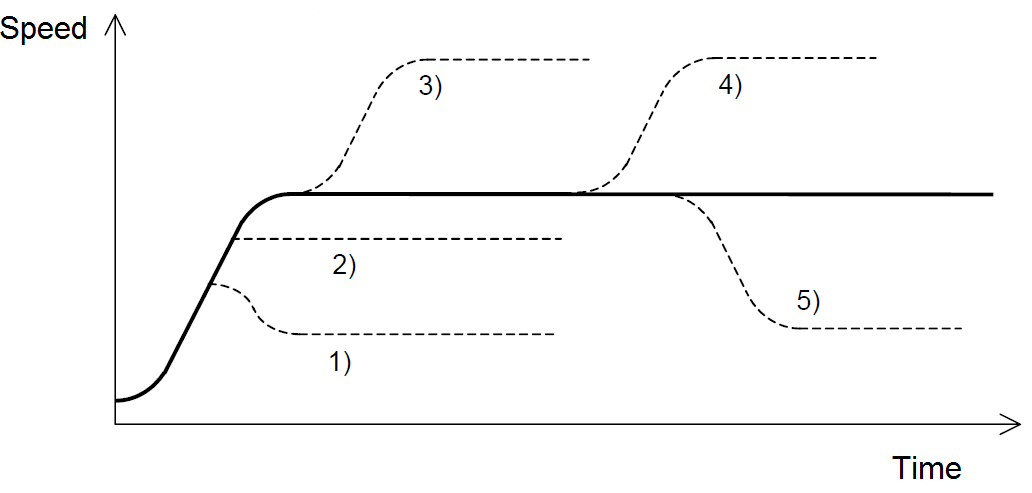2.4.1 On-the-fly speed change
This function can change the speed while an axis is in motion, at any point in the motion profile. The figure below shows a few examples of how speed changes are executed.

If the target speed is changed during the acceleration process, and:
- If the newly set value is lower than the pulse rate at the time of the change, deceleration is made to the newly set value.
- If the newly set value is equal to or higher than the pulse rate at the time of the change but less than the previous target, acceleration is made to the newly set value.
- If the newly set value is greater than the previous target, acceleration is made to the preset pulse rate and then to the newly set value.
If the target speed is changed while traveling at the previously set target speed:
- If the new value is higher than the previous target, acceleration is made to the newly set value.
- If the new value is lower than the previous target, deceleration is made to the newly set value.
On-the-fly speed change can be achieved using the SSPD[axis]=[newspeed] command. Before executing an on-the-fly speed change, ensure the correct speed range is set with the SSPDM[axis] command. For more information on the speed range setting, see Appendix B: Speed Settings and SSPDM in the command reference.
|
ASCII |
||
|
Standalone |
SSPD[axis]=[newspeed] |
SSPDM[axis] |
Operating procedure
If there is no change in the previous set data, operation 1 below is not necessary.
- Set the speed range with SSPDM command
- Issue the speed change command
Operating conditions
- While operating at HSPD (not decelerating)
- Buffer operation must disable
- S-curve acceleration/deceleration mode must disable
Related commands
SSPD, SSPDM, MST, PS
< Topic Home | Home | Next Section >
